#Xuanzang
Text


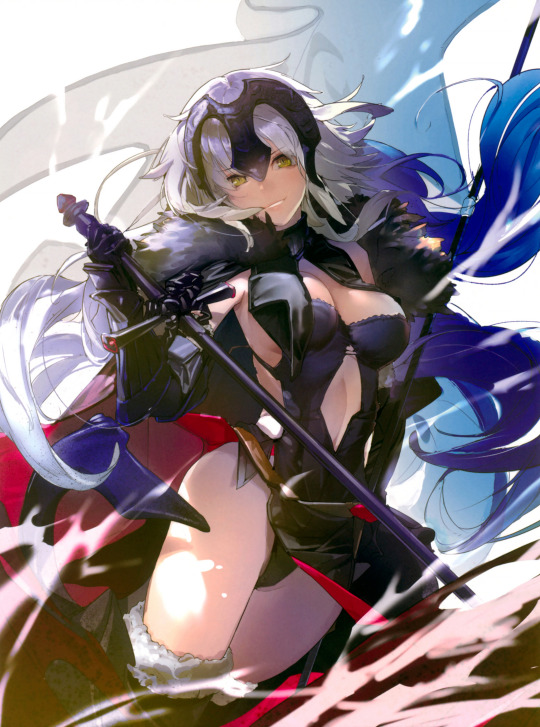


掃除朋具
#fate grand order#fgo#murasaki shikibu#tamamo no mae#jeanne alter#xuanzang#mashu kyrielight#mashu#fate#bikini#掃除朋具#*
300 notes
·
View notes
Text

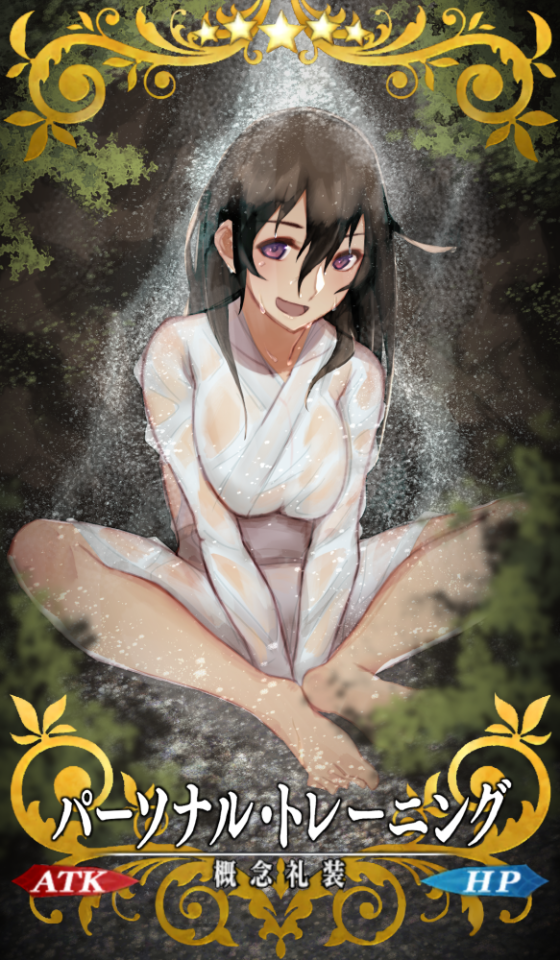
by ナリタ カサト
373 notes
·
View notes
Text

instagram
@axl-ul
#Journey to the West#Courtesy of Axl-ul#Tang Swolzang#Tripitaka#Xuanzang#Tang Sanzang#video#Instagram#He not only maxed charisma but also strength. 💪#He's a strong independent monk that don't need no magic monkey#Does anyone know what song is this?
279 notes
·
View notes
Text
Fun JTTW Text Reference for Artists
I've written at length about Sun Wukong's golden headband (here, here, here, and here). Anyone who has read the novel will know that it is used to rein in Monkey's unruly behavior through the application of pain. Such events have been portrayed by artists like Chen Huiguan in his Newly Illustrated and Complete Journey to the West (Chen Huiguan Xinhui Quanben Xiyouji, 陈惠冠新绘全本西游记, 2001) and Tianwaitang in his piece Tripitaka's Curse (2010).
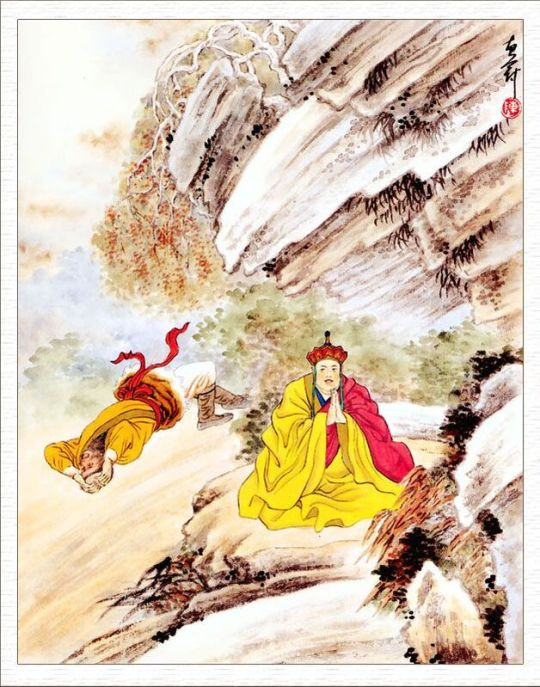
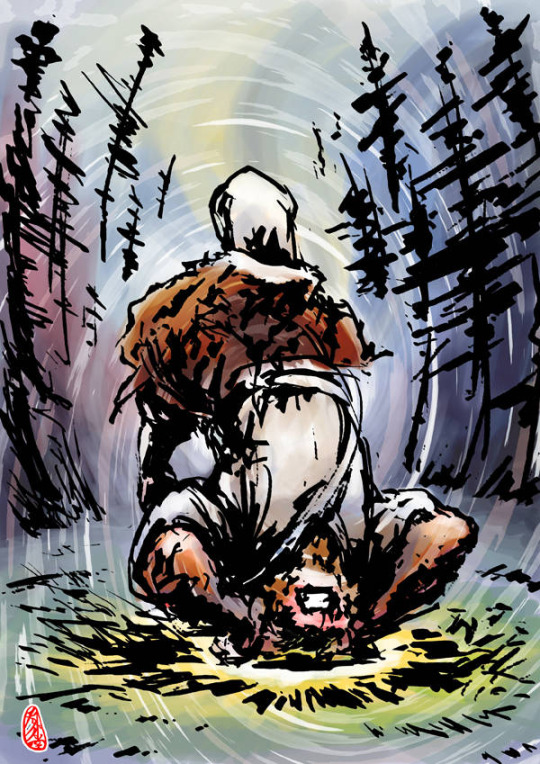
But I've never seen someone depict the instance with the greatest potential for an everlasting visual impact. In chapter 27, Tripitaka angrily recites the tightening spell 20 times to punish Monkey for killing what he thought was an innocent woman (it wasn't). This causes our hero's head to deform like a cartoon character!
The sight so frightened the Tang Monk that he fell from his horse. Lying on the road, he did not speak another word except to recite the Tight-Fillet Spell back and forth exactly twenty times. Alas, poor Pilgrim's head was reduced to an hourglass-shaped gourd! As the pain was truly unbearable, he had to roll up to the Tang Monk and plead, "Master, please don't recite anymore. Say what you have to say" (Wu & Yu, 2012, vol. 2, p. 23)
唐僧一見,驚下馬來,睡在路傍,更無二話,只是把緊箍兒咒顛倒足足念了二十遍。可憐把個行者頭勒得似個亞腰兒葫蘆,十分疼痛難忍,滾將來哀告道:「師父莫念了,有甚話說了罷。」
The original Chinese lists the "double-waisted" calabash gourd (yayao'er hulu, 亞腰兒葫蘆). I hope this gives artists an idea of what Wukong's head would look like.

I've previously noted how the novel describes Sun Wukong as an actual monkey, and it's because of this that the headband would likely rest on his eye orbits. I imagine his head being squeezed into the shape of a calabash gourd would make his eyes comically (or grotesquely) bulge, too.

#Sun Wukong#Journey to the West#Monkey King#golden headband#tight fillet spell#band tightening spell#Tripitaka#Xuanzang#Tang Sanzang#Tang Monk#calabash#gourd#cartoon#art reference#text reference#Lego Monkie Kid#LMK#JTTW
167 notes
·
View notes
Text
TRIPITAKA - the lost spiritual sequel to Cosmology of Kyoto was found
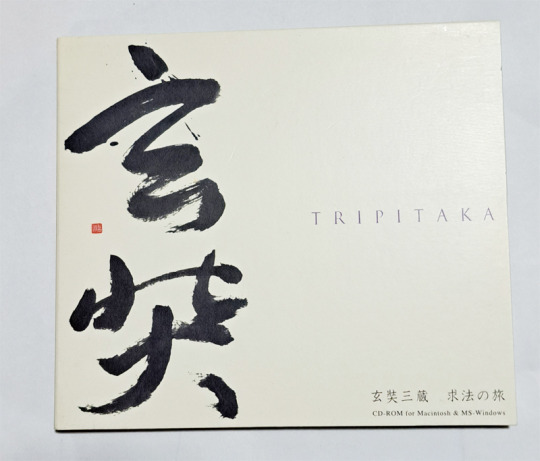
This post is a compilation of a series of tweets I have composed over a period of weeks during this summer.
For years, it was uncertain whether TRIPITAKA 玄奘三蔵求法の旅, by Soft Edge, had in fact ever been published. I remind the more absent-minded readers that this is the studio responsible for the mythical CD-ROM Cosmology of Kyoto, originally released in Japan in 1993, later published in the United States by Yano Electric in 1995. Knowledge of this their second and final production comes solely from the online CVs of producers Hiroshi Ōnishi and Mori Kōichi. No other information could be found online, and no actual copy of the game was known to exist.
Earlier this year, this disc surfaced at Yahoo Auctions. It sold for nearly $300 after 24 bids.

As suggested by its tile, which translates to Xuanzang Sanzo's Dharma-Seeking Journey, it was always assumed that the game illustrated episodes of the life of the celebrated Chinese Buddhist monk, particularly his 7th century pilgrimage to India. The captures printed on the back not only show a character highly reminiscent of the ancient scholar, they depict a variety of scenes taking place in China and India.
According to the severely incomplete archived version of PD Inc's website, the Japanese publisher responsible for this digipack, it was available for sale at museums hosting the 1999 Silk Road Journey To The West exhibition, which suitably matches the date printed on the back cover. However, this date presents yet another open question, as the Ōnishi-San and Kōichi-San bios both list it as a 1995 production.

The technical specifications may provide an enlightening clue, as they refer to Windows 95, 640x480px resolution and an 8-Bit color mode. This indicates that TRIPITAKA was indeed developed sometime between 1993 and 1995, although it was never published in the CD-ROM game circuit, certainly not in the immediate years after its development was completed. Combined with the data retrieved from the publisher's website, the edition shown here appears to have been produced solely for the occasion, as a means to diversify the museum shop catalog for this major exhibit, given the shared theme.
It would have been nearly impossible, had the program been in fact published in 1995, for a single copy to not have been spotted or mentioned online by the many Japanese collectors who have attempted to locate it for decades, unsuccessfully. On the other hand, a CD-ROM that was sold at a museum exhibit is likely to be purchased by visitors who were entirely unaware of the item's relevance as an elusive multimedia gem.
If a tangent is permitted here, both productions are inextricably linked with the museum space, and as far as I can speculate, Cosmology of Kyoto was, itself, also published with the intention of being made available in gallery stores in addition to computer game retailers. I say this because this was a production made possible by collaborative efforts including a variety of Japanese museums, to the extent these are referenced by name in the game's credits.
Considering the price at which the item was sold at auction, I was fairly certain that it was purchased by one such video game collector who knew exactly what they were bidding for. Later in July, I was able to locate the buyer and establish contact. Initially, the buyer was only able to produce this screenshot of the disc program launcher. The title reads "Cosmology of Asia", validating the claims that Soft Edge was in effect planning for series of edutainment software prior to its demise in the mid-90s.

In my second contact with the owner, I asked if he was available to produce a disc image and share it online for purposes of software preservation. The owner politely declined, stating that this was not something he was willing to do but offered to record the following gameplay video instead.
youtube
At a glance, the art style of Tripitaka is unsurprisingly similar to that of Cosmology. Most of its episodes occur during the day, whereas the latter was mostly played under the dark cover of night. The first scene depicts a dying Xuanzang reminiscing on his journeys in the company of a young chronicler. Structurally, both games are also nearly indistinguishable from one another, producing ample historical information for context, including detailed maps and chronologies.
TRIPITAKA was considered to be lost media for decades. As such, the importance of this footage could hardly be overstated. I would not hesitate to compare this development to the unearthing of Osamu Sato's Chu-Teng, the Eastern Mind sequel that was also deemed lost for many years, miraculously found during the time this blog was inactive.
I am delighted to have played a minor role in the unraveling of this thirty year old mystery, and can hardly contain my enthusiasm, as I now find myself equipped with sufficient information to produce a full post concerning a game about which I could not have written more than a sentence, just last year.
I would also like to thank the author of the @mendelpalace Tumblr for his timely alert regarding the Yahoo listing.
111 notes
·
View notes
Text
I've got a treat for u guys
My JTTW designs!! I tried to be creative yet honest with each character in how I draw them. I present you, Sha Wujing, Zhu Bajie, Bai Long Ma/Ao Lie, Xuanzang/Tripitaka, and Sun Wukong, the Monkey King!
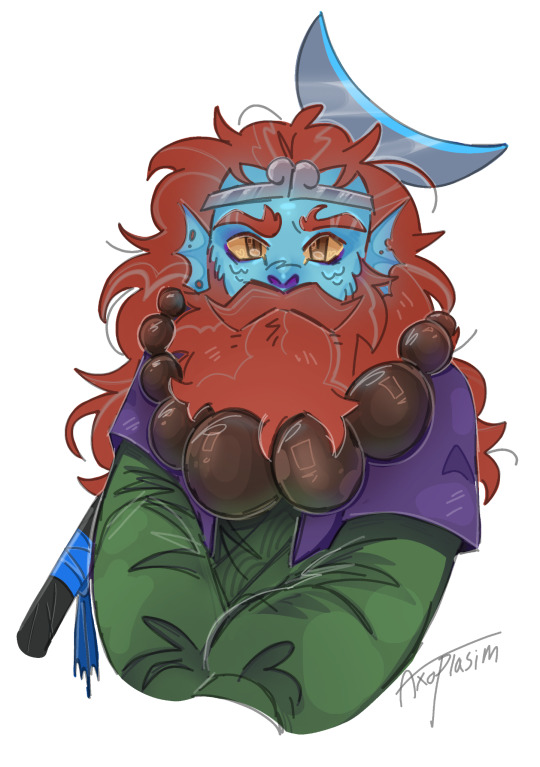




#jttw#journey to the west#sun wukong#Sha Wujing#Sandy#zhu bajie#Pigsy#bai long ma#Ao Lie#white dragon horse#xuanzang#Tripitaka#THIS TOOK ME TWO DAYS#finnaly just rant hashtags#THEY MAKE ME CRAZY#IM CRAZY IM CRAZY#i like sandys the best me personally#i love sandy so much#JOURNEY TO THE WEST GUYS#Jttw Axoplasim#Axoplasim#yeah#thats me#RAGGGHGGGGGGHHH!!!#rendered for real#im mad#crazy#i love them#jttw sun wukong#im dying
76 notes
·
View notes
Text

Wonder what he’s looking at.
(its wukong.)
From an au set after the journey, hence trips immense bling. He has status now. Hes also still very much in love.
This piece is….. very old. My ref was a pose ref made by kibbitzer.
#trips art#journey to the west#lego monkie kid#tripitaka#tang sanzang#xuanzang#suntrip#if you squint
82 notes
·
View notes
Text
just finished reading a fic in which shiki kills the concept of heterosexuality in the nasuverse, nasu should make it canon tbh
(omni-fem-slash by swiftrunner)
#which shiki? why both of course!#it’s the greatest fic of all time nothing is touching it actually#shiki tohno#shiki ryougi#gudako#mash kyrielight#aoko aozaki#alice kuonji#rin tohsaka#ayako mitsuzuri#xuanzang#minamoto no raikou#tonelico#habetrot#jalter#salter#good lord there were so many characters in this#baobhan sith#arcueid brunestud#ciel tsukihime#not tagging anymore read it to find out#a win for yuri
43 notes
·
View notes
Note
Back in Ming dynasty, were all characters given some kind of backstory or is that a JTTW thing?
If you mean all the characters in the novel then yes most of the gods and even several demons were already established in Buddhist lore and Chinese folklore long before the novel and they make more cameo appearances within the books. Not all the demons were created before the book but there are certainly inspiration from real mythos in their creation. I do a little backstory for the demons here if you wanna check it out.
As for the main five that is a bit more tricky. Sanzang of course if based on Xuanzang the real-life Tang Monk.
The earliest mentions of Sun Wukong are from The Story of How Tripitaka of the Great Tang Procures the Scriptures in late-13th-century CE so that would be right in the middle of the Ming Dynasty. But of course, you could consider how Wukong is inspired by both Hanuman who rose around the second millennium CE and Wuzhiqi whose tale is around the Tang and Song Dynasty. Different monkeys for sure but he is inspired by these legends in his final creation.
Bajie was really made in the Zaju play early Ming dynasty (14 to 15th-century) where he was shown to be a demon in a similar form and part of the group. However, I had read that his inspiration go as far back as the Jin Dynasty. They say his origin may lie with the story "猪臂金铃" by Gan Bao in Jin Dynasty. Or that he was inspired by He Bo Feng Yi, because the prototype of Feng Yi is a pig. Wu Zimu's "Meng Liang Lu" mentioned that "Tianpeng" was originally a Taoist fairy official. Some people also think that the prototype of Zhu Bajie comes from Indian Buddhist scriptures, as Chen Yinke said. There is a portrait of "Pig Head Bodhisattva" in the Thousand Buddha Caves in Kizil, Xinjiang, excavated in the early Tang Dynasty. He is called "Marizhitian" in Buddhist scriptures.
As for Wujing he was actaully written in Xuanzang's historical biography from the 7th-century as a complacent water spirit. He was an established character even before Bajie and Wukong but receives the least amount of attention sadly enough. Some scholars believe that he might have been inspired from the image of the deep sand god of Esoteric Buddhism from "The Poetry of the Tripitaka of the Tang Dynasty" as Shensha. Shensha God exists as an authentic Buddhist god however, in the scriptures translated by Zhu Tanwulan in the Eastern Jin Dynasty, Shensha and Fuqiu existed as evil spirits, rather than Dharma protectors.
As for Bailong he was created for the novel itself but there is a long history of how heavenly horses and even dragons were before his creation. In the Zaju play Bailong was actually a Fire Dragon Horse. I have to thank @ryin-silverfish for this information that according to 西游故事跨文本研究 Bailong's origin could be traced to a tale about an actual horse in the aforementioned biography of Xuanzang. The unnamed skinny old horse was gifted to Xuanzang by an elderly foreign man, who was an experienced traveler of the western roads. Later, when Xuanzang had lost his way in the desert and was about to die of thirst, the horse took a different road of its own accord and saved the day by bringing him to an oasis. Because the said horse was red in color and why the Dragon Horse was often called a Fire Dragon Horse in later Baojuan and Zaju plays, and this was changed to white because of the keystone imagery in the legends of Buddhism's spread to China "white horse carrying the scriptures" (白马驮经).
Hope that helps!
#anon ask#anonymous#anon#jttw#journey to the west#sun wukong#xiyouji#ask#zhu bajie#sha wujing#tang sanzang#bai longma#bailong ma#bai long ma#monkey king#xuan zang#xuanzang
17 notes
·
View notes
Text

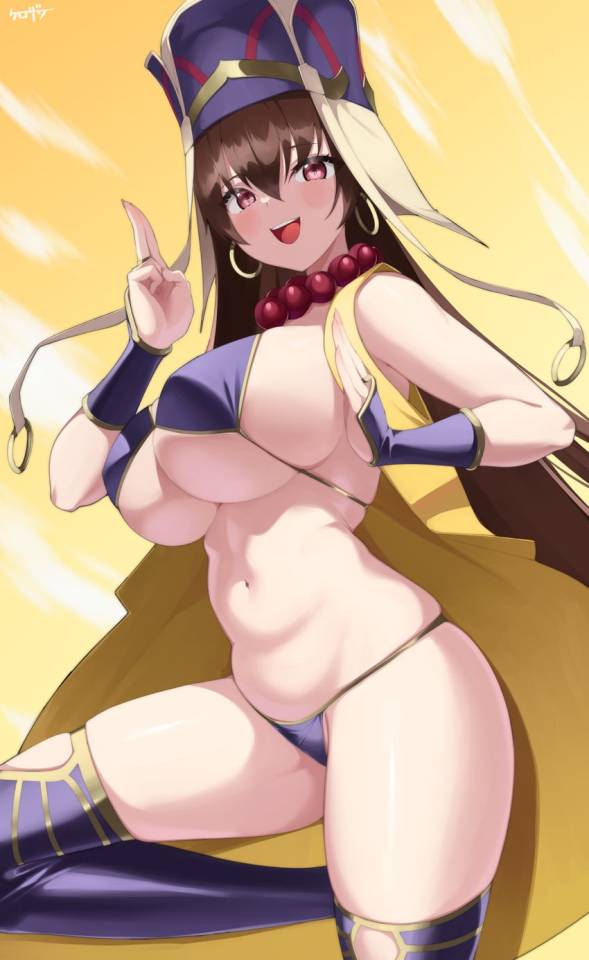
黒澤ユイ
278 notes
·
View notes
Text

Sanzang redesign. 🪷
35 notes
·
View notes
Text
PDFs of Foreign Language Journey to the West Translations
I’m happy to host a number of foreign language translations of the noted Chinese classic Journey to the West (Xiyouji, 西遊記, 1592 CE). This archive currently houses the following editions:
English
French
German
Hungarian
Italian
Romanian
Russian
Spanish
Thai
Vietnamese
As of this writing, I don’t yet have a modern Japanese translation. But you can read an original copy of the 1835 translation here.
I have also included translations of the unofficial sequel, A Supplement to the Journey to the West (Xiyoubu, 西遊補, 1640), in the following languages:
English
Hungarian
I will add more languages as they become available. Please let me know if you have access to other editions.
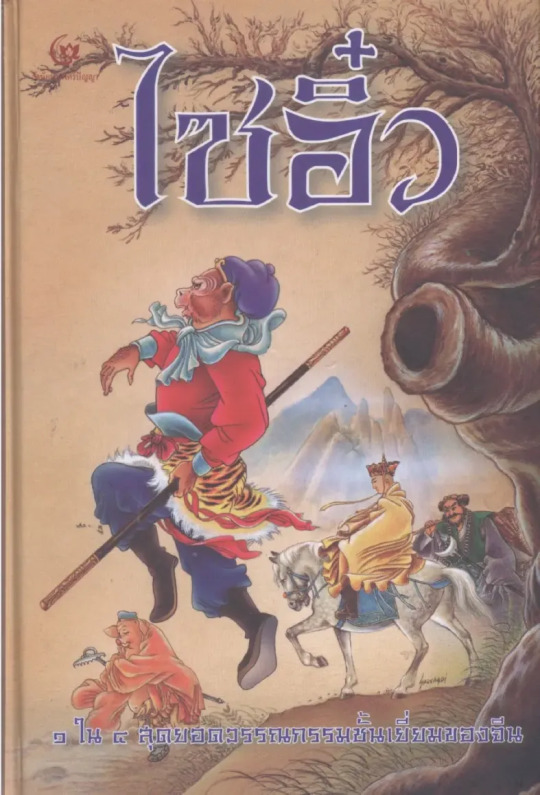
#Journey to the West#Xiyouji#Saiyuki#Sun Wukong#Son Goku#Goku#Monkey King#Tang Monk#Xuanzang#Sanzang#Tripitaka#Zhu Bajie#Zhu Wuneng#Pigsy#Sha Wujing#Sha monk#Sand Monk#Friar Sand#Sandy#Dragon Horse#White Dragon Horse#Chinese literature#Chinese mythology#Chinese religion#Buddhism#Taoism#lego monkie kid#jttw#LMK#translation
226 notes
·
View notes
Text
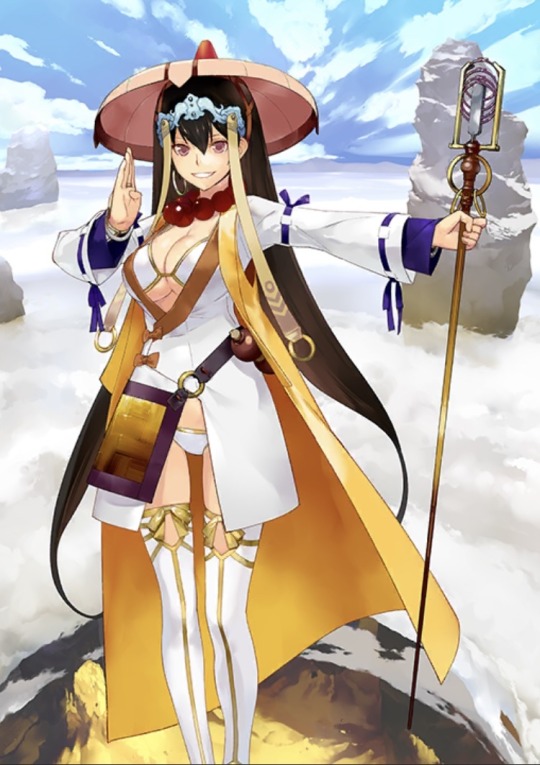
Context:

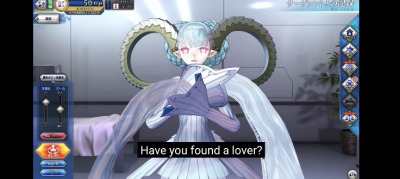
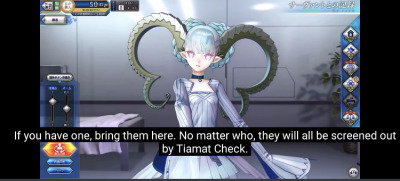
#fate#fate grand order#fgo#xuanzang sanzang#sanzang#xuanzang#tiamat vibe check#you think the Buddha’s Most Specialist Girl wouldn’t pass the vibe check? wrong she is the buddha’s bestest most specialist girl.
14 notes
·
View notes
Text
JTTW Chapter 12 Thoughts
Chapter Twelve for the @journeythroughjourneytothewest Reading Group!
Right off the bat that demon guardian did not play around! He was sent there on a mission and he saw it through with a passion.
When Li Cuilian said “yellow as if it had jaundice” I was not expecting that. Excuse me, jaundice?! Now that got me laughing!
Also yes, with that personality Li Cuilian is putting on display here I can believe that she took her life out of spite rather easily. Technically I’d say good for her, if I wasn’t still iffy about both her and her husband just abandoning their children so willingly.
Moving on from the mess that is them finally, I got to say I have a great appreciation for how religions coexist like this, which has been reiterated in this chapter. They all but stated outright how sure you can believe in whichever you want to, but you don’t slander or belittle or what have you other religions.
Honestly everything that might be considered plot convenience like Xuanzang being in Chang’an exactly while Guanyin is looking for a scripture pilgrim is explained to a degree by literal fate existing, so it actually makes sense in this world. I find that just really interesting.
“Shaped like Eight Treasures are the thread-made frogs.” There are frogs on the cassock?! 10/10 perfection indeed! I know they probably don’t mean actual frogs, but let me dream.
Also the luminescent pearl sounds so nifty, an outfit with those probably looks really cool in the dark! Really if one were to take the description of the cassock literally the look of it would be so silly and over the top and I love it.
Sticking with the topic the expansiveness of the poem on the cassock in contrast to the shorter one for the staff comes across to me like ‘Take this epic item that is so awesome and sparkly shiny and will make you look the most fabulous while providing divine stat increases! Oh and I guess this staff that can help you with walking too.’
“What a priest! He is truly a living arhat descended to Earth, a live bodhisattva coming to the world!” Oh if only they knew.
Guanyin continuing to be one of the best deities! She really went ‘Eyo, dude!’ and continues to be so nonchalant. She’s just great there’s nothing else to say really, she’s so cool.
And Xuanzang being so delighted at the opportunity to learn pretty much disregarding what he was just doing, he is such a nerd and we love him for it! He’s so happy and full of hope. Sweet bean doesn’t know about the horrors yet.
Randomly to my mind came the image of any celestial really just acting as literally light at night. A funny image indeed. Which shows up in Fei Ren Zai! Specifically Guanyin using their halo as a night light!

Continuing with funny mental images, when Taizong “raise[s] up the monk with his royal hands” I could only imagine him holding Xuanzang up like Simba.
I’m saying it now I want a reunion scene with those disciples! I want them to be really sad when the sixth or seventh year goes by and grow more and more disheartened with every year, but be all the more happy when they get the reunion after all.
Yey, he finally got his iconic name of Tang Sanzang! Let’s gooo!
We’re finally off to the actual journey!
Though I have one more little trivia bit for this chapter. Specifically about the meaning of the date of departure from the German translation! The third day of the ninth month can be read with symbolic meaning.
The third day of a month relates to the Trigram Zhen and thus beginnings, though do take this with a grain of salt, because when I tried to check if that Trigram really carried such meaning I couldn’t find a clear answer. What I’m sure tracks though is that the number nine symbolises Yang.
Since I’m not entirely sure about this trivia bit I’ll directly mention that the German translation refers to Chen Zhibin author of Xiyou Zhenquan (西遊真詮) for the interpretation of the date.
#xiyouji#journey to the west#jttw#fei ren zai#Li Cuilian#guanyin#xuanzang#tang sanzang#jttw reading group#jttw book club
15 notes
·
View notes
Text
Chapter 9.
Reading this chapter another time, then and now, left me somber. It starts out joyful with our favorite monk's parents' meeting. His father, Guangrui, gained a blessing to go to the capital for examination and job; getting first in rank and personally being praised by the Tang Emperor. Spent 3 days on horseback going around the capital. Then we're introduced of Xuanzang's mother, Yin Wenjiao(referred to as just Lady Yin later on), who sees a handsome, smart, and high ranking official during his 3 day parade; throws down a embroidered ball at her future husband knocking off his black cap. Though I like to think she went: "YOU!" pointing at him from the tower and aimed for his head. Really making sure that this guy's dense and doesn't get a hint. Actually, does that mean she technically proposed to him? Anyways they get married, move to city for Guangrui job, and picked up his mother along the way. Even saved a golden carp and sending it back to its river! Guangrui mother gets sick and forced to stay at a rent house. A little bump in the road, but that's fine since the couple can retrieve her in the fall.
Then Liu Hong appears captivated by Lady Yin's beauty and rips the young couple future away by killing Guangrui and stealing his identity. Forcing Lady Yin to comply to his demands. They dump Gaungrui's body in the river where thanks to saving, not actually a carp, his body and soul is preserved until his is avenged by his murderers.
Lady Yin is miserable in her situation, wishing to eat Liu Hong body and sleep on his skin. But kept her dark thoughts to herself and didn't enact on them; as she was pregnant with our monk! But not happy news as Bastard Liu Hong will kill our future protag the second he gets the chance. Thanks to divine intervention and luck, Lady Yin manages to send the baby away. By writing a letter in her own blood and biting off one of his toes before sending him off on river; tied by her garment before found by a monk.
So our monk, nicked River Float, and then called Xuanzang once he turned eighteen and joined the monetary; he learned of his orgins and set off to right wrongs. He succeeded, reuniting his mother, who helped him get in contact with grandfather. Who later just destroyed Liu Hong in a brutal fashion. I strongly don't think Xuanzang was there to see that part as he was probably with his mother, who already tried to kill herself once saved. She does it again after they toss Liu Hong's heart and liver into the river, seeing her husband body floated up. Who comes back to life!
Happiness as Xuanzang's family all together again, his father joins the Emperor court, and he continues with his studies in the Way. Except for Lady Yin, who succeeds in taking her life. Bittersweet ending.
Now for my notes and theories. You cannot tell me that this boy wasn't bullied by his peers for being an orphan. He had nothing, no name, probably no friends, and put all his efforts into studying the scripture as a source of comfort or even proving his worth to be there. (I could ramble more on his upbringing and the similarites with him and Wukong's background, but that could be for another day)
Besides the luck and divine intervention(and Sha Wujing eating his past lives), another clue that Xuanzang might be special is when he cured his grandmother blindness by licking her eyelids.
Or the pain and guilt that despite everything he did failed to save his mother.
But that's enough rambling from me for now.
@journeythroughjourneytothewest
#tw suicide#cw suicide#implied suicide#journey to the west#jttw#xiyouji#xuanzang#jttw tag#jttw book club#Buddha really told Golden Cicada get fucked for all your next lives#I could explore more into Lady Yin and her death#Also what happened after she bite off Xuanzang's toe? Did she bury it#hide it or a more terrible thought did she ate it?#I have more thoughts on this chapter but I feel like I could go on forever taking everything apart.
12 notes
·
View notes
Text
Chapter 9 and 10
Heyo folks taking a @journeythroughjourneytothewest
Had to take a break from book club last week, burn out was very bad. But I've had a week to relax, celebrated my birthday and slept most of the day lol. Let's get back into Journey to the West
First: Chapter 9.
We finally meet our Monk and learn the story of his family!
We don't spend a lot of time learning about them (minus his Dad, gets a thumbs up from me. Kind to all and easy going enough to be like "I got hit by a ball-- oh I'm married now? Okay cool". Like talk about a shotgun wedding), but we do see little bits that remind me of our Monk. He does share his kindness with his Dad, and I genuinely think his anxiety is from his mom. I'll talk about her in a minute because she is a whole other thing.
My one question is... wouldn't other officials notice that Liu Hong, essentially becoming Chen E, had no idea what he was doing??? He went on business trips, did no one recognize he wasn't who he said he was????? I mean you would think anyone who took the exams with him who got positions would be like "uh... that's not him tf??". Or they just did not care. Who knows at this point. Apparently he had Six Eared Macaque level disguise skill, rolled a nat 20 in bullshitery.
Now. Lady Yin. The poor lady went through hell for over 18 years. She had to watch her husband get murdered, had to abandon her baby, and had to play wife to a murderer. Even when her husband came back... I'm not surprised she still ended up passing. That's a lot of guilt (and I'm sure Liu Hong was not kind to her) on her mind for a LONG period of time, nearly two decades. I wish there was a happy ending for the family but I get why it ended how it did, knowing what depression and anxiety can do to people.
Now our baby Monk. Our Xuanzang. I am so proud of him for being as brave as he was. This recently turned 18 year old did everything he could to help his family. Licking his grandma's eyeballs was...a choice. But it was for a good cause so good on him. I can see why he was a good choice as the Scroll Pilgrim.
And as promised, a sketch of Xuanzang

And as a bonus baby Monk with a doggo

But now we move to Chapter 10.
...I legit got annoyed going thru the debate between the fisherman and woodman. Like it went on far longer than it should have. I'm sure there was a profound moment that we're supposed to glean from it but I just wasn't receptive to it. Maybe I'll read it again.
Anyway.
I have been doing some looking into of Chinese historical heroes (I desperately want to read Romance of the three kingdoms, and I need more reading material about folk heroes and heroines) so seeing some references to the stuff I learned made me happy. There was mention of Liu Bei and Zhuge Liang and the painting of The Emporer's Generals on the doors (supposedly the Tang dynasty is where this practice was first used. A few three kingdom folks also get this treatment as door gods, or menshen, along with other important heroes and deities. Makes me wonder if the Emperor essentially deified his Generals and Wei Zheng. How does Heaven handle that?)
Fun fact! In my jttw x mythology story Wukong will work with Asena, mythical wolf mother of the Ashina Clan of Gokturks. Guess which dynasty of China had to deal with them a lot? :)
Anyway.
I've also come to the conclusion that Dragons just like to fuck around and find out. Like, the Dragon King just goes against heaven's orders to spite a very accurate fortune teller, does not even THINK of the consequences, and is surprised Pikachu face when he gets in trouble. Also not sure why he thought appealing to an earthly emporer would save him from THE SUPREME DAOIST DEITY'S JUDGMENT. Like, y'all, I'm beginning to think dragons just don't give a crap or just don't think. Got what he deserved for being dumb. Did the emporer make promises he shouldn't have? No doubt, you don't promise supernatural beings anything because it will make you want to die if they catch wind of you breaking promises, regardless of nationality. Did he deserve what he got? .... I mean historically probably but in the sense of this story, no.
I find the Tang dynasty interesting (because it gave us a certain Empress and had some fun female warriors, like Taizong's sister, who helped her father found the dynasty) and I can definitely thank jttw for getting my attention about it.
I think that's all I have as far as thoughts. And I apologize if my rambles just jumped around too much lol.
Over and out ✌️
#journey to the west#jttw book club#jttw tang sanzang#jttw Xuanzang#xuanzang#slight mention of#jttw x mythology#the more you know
13 notes
·
View notes